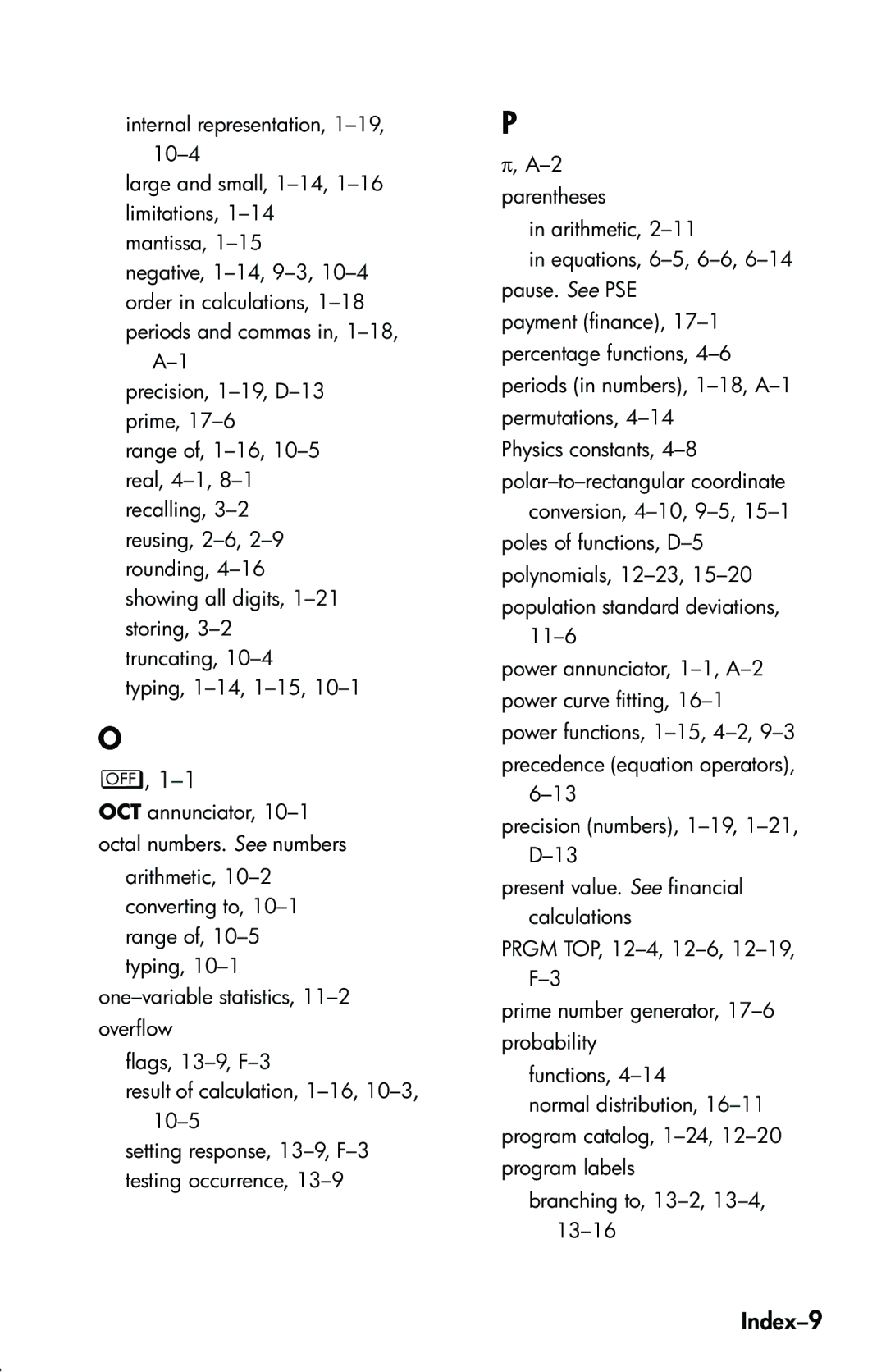internal representation,
large and small,
negative,
precision,
range of,
typing,
O
,
OCT annunciator,
arithmetic,
flags,
result of calculation,
setting response,
P
π,
in arithmetic,
in equations,
payment (finance),
Physics constants,
conversion,
power annunciator,
precision (numbers),
present value. See financial calculations
PRGM TOP,
prime number generator,
functions,
normal distribution,
branching to,
